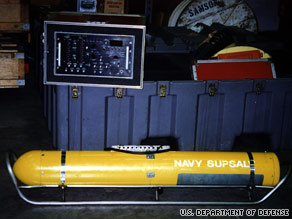
Authorities are most unlikely to recover all parts of the Air France plane that went down June 1 in the Atlantic Ocean with 228 people aboard, an official with France’s air accident investigation board said Wednesday.
“It’s virtually certain that the entire aircraft will not be recovered. All the bodies which are or will be found will be recovered, but I do not know how many. I cannot say to you,” Paul-Louis Arslanian, director of Bureau d’Enquetes et D’Analyses, said. He was speaking as officials continued to investigate why the Airbus A330 crashed into the sea, hundreds of miles off the coast of Brazil. Flight 447 had been flying from Rio de Janeiro, Brazil, to Charles de Gaulle Airport in Paris, France, when it went down in stormy weather. The investigation is focusing on the on-board speed sensors which may have given incorrect information to the pilots as they battled to fly through the terrible conditions. Air France is currently replacing the sensors on its Airbus A330s but those on the doomed plane had not yet been replaced, the airline said Air France has promised that no Airbus A330 or A340 will take off unless at least two of its three Pitot tubes have been replaced. The tubes are an instrument contained in the speed-sensing system. Terrorism has not been ruled out as a possible cause of the crash though and a French news magazine has reported that two of the passengers on the flight had names linked to Islamic terrorism.
Don’t Miss
‘Black box’ could hold answer to plane crash mystery
Airplane went down in volatile equatorial zone
Air crash victims’ bodies arrive at DNA lab
An official with the FBI’s Terrorist Screening Center said the names were not on any U.S. watch lists. The flight recorders from Flight 447 are now the subject of a massive international search because they could hold the answer to the cause of the crash. A French nuclear submarine and other vessels now searching for the recorders are focusing on its underwater locator beacon — a device that sends acoustic pulses, or “pings,” to searchers. The U.S. Navy is contributing two high-tech acoustic devices to locate the pings that will be attached to French tug boats and can search to a maximum depth of 20,000 feet (6,100 meters). The batteries that power the locator beacon are designed to last for about 30 days, though the boxes are designed to keep the contents safe for much longer. While the wreckage is believed to be about 15,000 feet (4,600 meters) deep, amid underwater mountains and mixed in with tons of sea trash, experts have said they are confident the recorders can be found. Airspeed sensors like those on the downed plane are susceptible to icing in high-altitude storms. They can affect the stability of an aircraft, particularly if it is on autopilot; one wrong reading can make the autopilot shift the plane into a wrong direction or wrong speed. Interpol, the international police organization, is helping to coordinate efforts by a number of countries to identify the crash victims, who came from 32 countries.